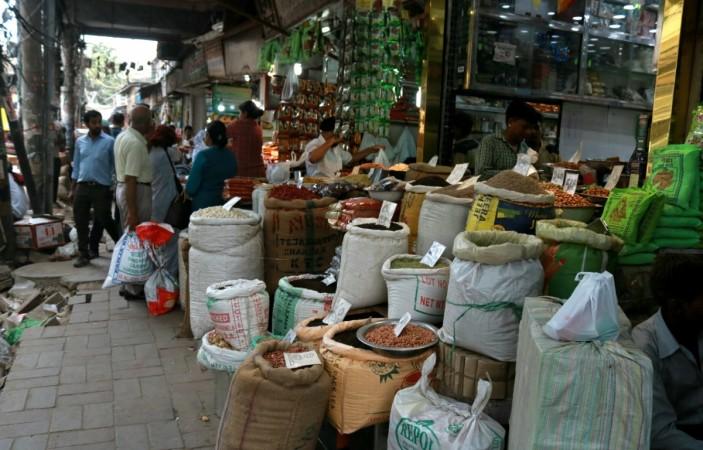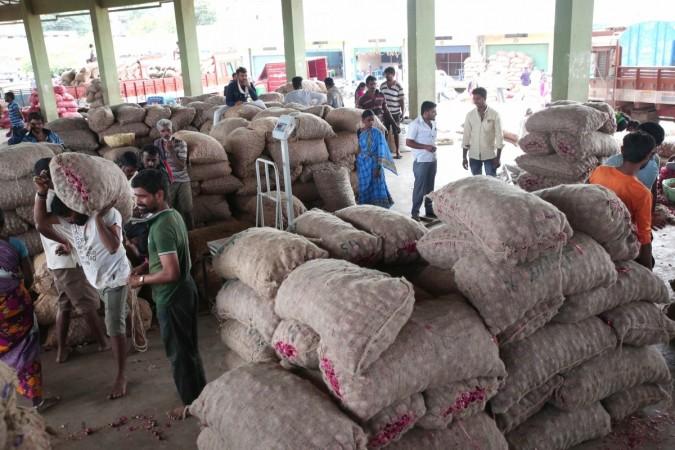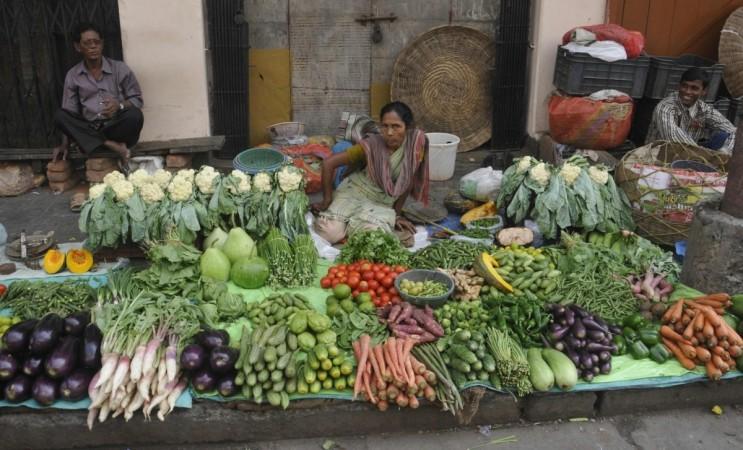
After retail inflation, the prices of essential commodities especially food items such as vegetables showed a massive rise in November on wholesale basis.
Accordingly, India's annual rate of inflation based on wholesale prices jumped to 0.58 per cent in November from 0.16 per cent in October.
However, on a year-on-year (YoY) basis, the Wholesale Price Index (WPI) data furnished by the Ministry of Commerce and Industry showed a decelerating trend as inflation had risen to 4.47 per cent during the corresponding period of 2018.
"Build up inflation rate in the financial year so far was 2 per cent compared to a buildup rate of 4.56 per cent in the corresponding period of the previous year," the Ministry said in its review of "Index Numbers of Wholesale Price in India" for November.
On a sequential basis, the expenses on primary articles, which constitute 22.62 per cent of the WPI's total weightage, increased to 7.68 per cent from 6.41 per cent.
The prices of food items increased at a faster rate of 11.08 per cent from 9.80 per cent.
Onion price increased by 172.30 per cent in November while it was at 119.84 per cent during October 2019. Overall, vegetable prices in November rose 45.32 per cent against a rise of 38.91 per cent.

However, the cost of fuel and power, which commands 13.15 per cent weightage, deflated by (-)7.32 per cent from a decline of (-)8.27 per cent.
On a YoY basis, expenses on primary articles, which constitute 22.62 per cent of the WPI's total weightage, increased to 7.68 per cent from a rise of 0.59 per cent in November last year.
The YoY prices of food items increased YoY at a faster rate of 11.08 per cent from (-)3.24 per cent.
Onion price increased by 172.30 per cent while it was at (-)47.60 per cent during the corresponding period of last fiscal.
Overall, vegetable prices in November rose 45.32 per cent against the decline of (-)26.71 per cent in the same month a year ago.
The cost of the fuel and power category declined (-)7.32 per cent against a rise of 15.54 per cent YoY.
Furthermore, the cost of the manufactured products category declined (-)0.84 per cent against a rise of 4.21 per cent YoY.
The data trajectory assumes significance as it fans further concerns over -- stagflation -- an economic trend which marks rising inflation and falling Gross Domestic Product.
Last week, another key inflation data point -- Consumer Price Index -- showed that a massive rise in food prices lifted India's November retail inflation to 5.54 per cent from 4.62 per cent in October.
What drove up WPI inflation?
Incidentally, the Reserve Bank in its latest monetary policy review had maintained the key lending rates on account of rising retail inflation.
"As expected, a further spike in the inflation for primary food articles to a 71 month high 11.1 per cent, drove up the WPI inflation in November 2019, arresting the downtrend seen in the previous two months," ICRA Principal Economist Aditi Nayar said.

"Nevertheless, the core-WPI displayed a YoY disinflation for the fourth consecutive month, the pace of which worsened to 1.9 per cent in November 2019, reiterating the weak demand conditions in the economy."
According to India Ratings and Research's Principal Economist Sunil Sinha: "Recent data in retail and wholesale inflation though is showing divergent trends, for RBI the nominal anchor is retail inflation."
"Therefore, India Ratings and Research believes, like in December 2019, RBI will continue to do the balancing act even in its February 2019 policy review. With fiscal deficit likely to exceed budgeted 3.3 per cent of GDP in FY20 and non-transmission of policy rate cut so far in the real economy means that RBI would act on policy rate based on evolving economic situation and incoming high frequency data despite the fact that growth slowdown perhaps warrants further cut in the policy rate."

















